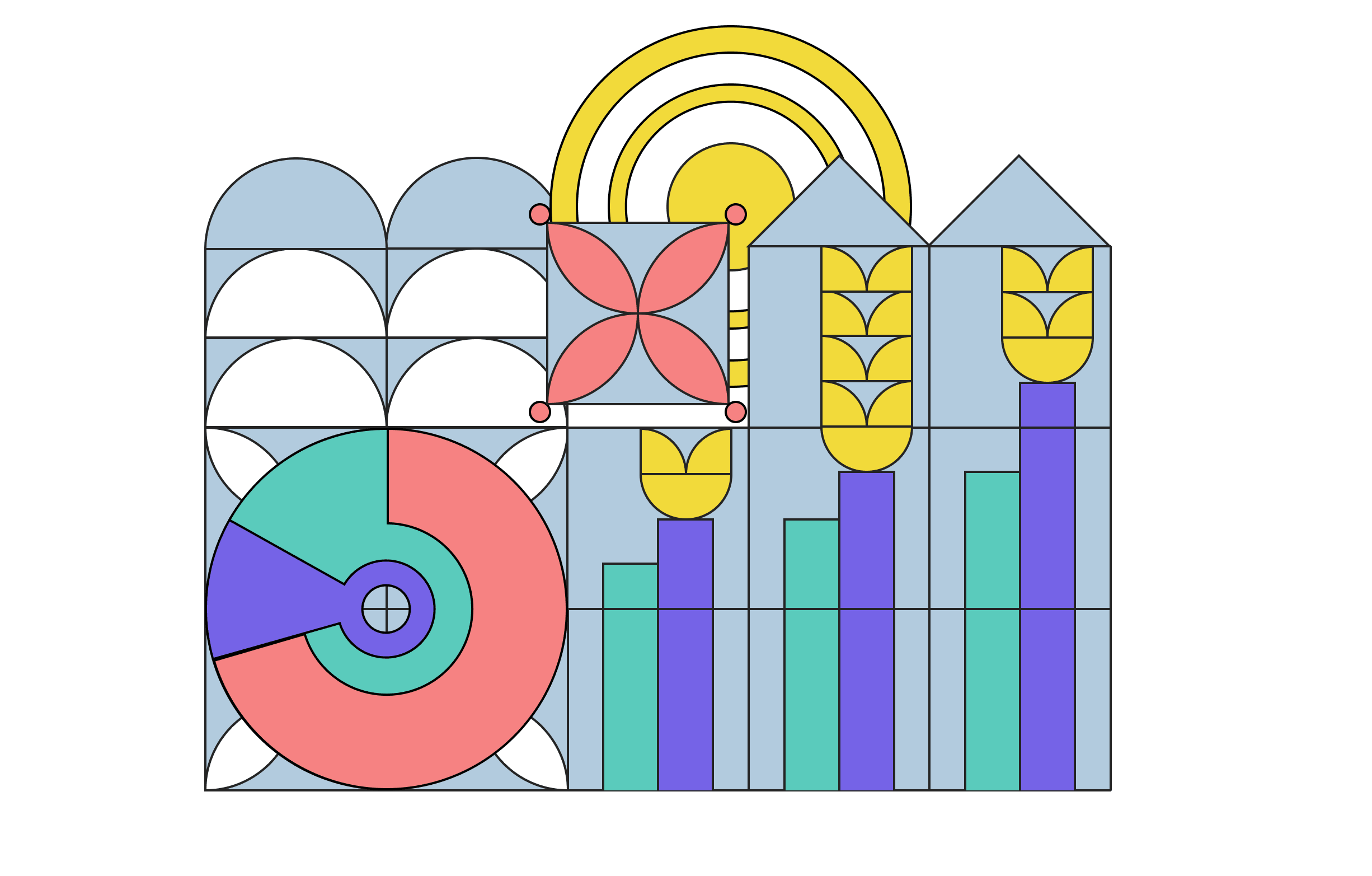How Can Data Increase the Return on Investment of Your Digital Product?
More and more, data is an essential ingredient in your digital product design process; especially if you want a product that truly fulfills user needs and provides a great UX. Everyone is talking about data-driven design, but the key question is, does it impact your bottom line? And if so (it does!) then how? Read on for more on how to improve ROI using data analytics!

Table of contents
A very brief introduction to data-driven design
It’s all in the name: data-driven design is any digital product design process in which decisions are based on data and information about the product’s target users. The purpose of the data is to gain better, more detailed insights into user needs and preferences. Data is gathered based on design hypotheses and experimentation, utilizing various forms of user engagement – including prototypes and testing – to involve users in the design process. Decisions on features, functions, the user interface, and even marketing and sales strategies, are based on the gathered data.
The idea of data-driven design is to minimize uncertainty and the reliance on designers’ intuition in the design process; relying instead on clear data to indicate how and where designers’ expertise should be applied. Data-driven design offers a route to satisfying both user needs and business objectives when creating digital products.
The role of data in design
How is data used in the design process? Data-driven design is an acknowledgment of the fact that however knowledgeable and experienced the designer is, there are always assumptions implicit in any design. It is about gathering and analyzing information to test those assumptions, thus ensuring that the final result is based on proven user needs and not intuition or guesses.
The relevant data may be of various kinds, gathered from a number of sources (design analytics, user surveys, testing, etc.) Hypotheses and assumptions are tested against the data, and a fuller, more precise picture of user pain points, preferences, and behaviors is established. User data and feedback are then used as the basis of decisions during the design and development of the product. Prototypes or MVPs may be created to test specific aspects of the product with its future users. As the product passes through various iterations during development, user experience data is gathered and used to ensure that the product design is optimized.
Data-driven design is a perfect fit for an agile, iterative build-measure-learn approach to product development.
What types of data are used in data-driven design?
Data can usually be classified as either quantitative or qualitative. Quantitative data is measurable, numerical, and often statistical in nature. For example, website analytics can give you hard insights into website performance, identifying the pages with the most traffic, processes with the highest bounce rates, or feedback on the current page layout.
Qualitative data, on the other hand, is less statistically measurable being focused on user viewpoints, emotions and motivations (for example, the data gathered using a questionnaire to test user opinions).
Quantitative data tells you the what; qualitative data tells you the why.
As to the sources of information for use in data-driven design, good places to start include the following:
- Design analytics tools (e.g. Google Analytics, Amplify, or Mixpanel)
- Heat maps & click tracking (e.g. Hotjar)
- User behaviors (e.g. Clarity)
- Multivariate testing
- A/B testing
- Usability testing
- User surveys or interviews
- Focus groups
Benefits of data-driven design to ROI
By now, the fundamental benefit of data-driven design is probably clear: a better product. Let’s take a closer look:
- Better than best practice? – Following design and development best practices can give you a solid product with few obvious drawbacks; however, following the data can give you a product that meets the precise needs and requirements of your target user group. In some instances, however, data can enhance established best practices, making them even more effective
- Justified design decisions – Whether it’s within the design team, talking to developers, or convincing stakeholders, if the data backs up your design decisions they carry a lot more weight and provide objective justification for your design direction.
- Data-driven UX – A product’s user experience should give users what they want and need; when your UX is based on an analysis of your specific users, the result is a better experience.
- Continuous improvement – Data-driven design is not just about gathering some information up front and then getting on with product development; the process is ongoing, with new data gathered at each stage of the process, testing each hypothesis, or assumption, or design feature with users.
- Rapid failure correction – Not every design idea is going to be a good one. With data-driven design, ideas are tested before committing to implementation and development cul-de-sacs are identified as early as possible. Data enables you to pivot early, before unnecessary time and expense have gone into features that users won’t use.
For an example of a successful data-driven design project, check out our YOUCAT case study.
Implementing data-driven design to improve ROI
The key to data-driven design is to incorporate it throughout the design and development process. The following is a simple way of doing so:
- Identify a specific aspect of the design – It might be the bounce rate on your website, a call-to-action button, or a specific user feature… the point is to choose a specific, tangible element of your design.
- Set a goal – What is it you want or hope to achieve by focusing on the chosen design aspect? Typically, this might relate to a longer time spent on the website, increased conversions, a lower churn rate, etc.
- Metrics – Goals are great but to know whether you’ve hit them or not, you need metrics; specific measurable indicators, such as page views, bounce rates, time on page, conversion rates, etc.
- Choose your data-gathering method(s) – You know what data you need (information that fits your selected metrics), now you need a method of collecting it. As mentioned above, common and effective data-gathering methods include A/B testing, design analytics, surveys & interviews, focus groups, heat maps, and usability testing.
- Select a tool - you will need tools that are suitable for collecting the data you wish to gather. I mentioned the most popular ones earlier in the article.
- Collect and analyze the data – Having collected a range of data (ideally including both quantitative and qualitative), it’s time for analysis. Data visualization methods – such as graphs and charts, empathy mapping, or affinity mapping – make it easier to identify useful insights based on trends, patterns, seasonality, or objectively consider anomalies or unexpected indications. Pro tip: In most cases, Google Sheets or Microsoft Excel are all you need to analyze the data!
- Data-based decision making – The final step is to make design decisions (continue, add a feature, pivot, etc.) based on what the data and analysis are telling you.
At Boldare, we habitually begin kick off a new product with a product vision workshop, gathering together the team, product owner and stakeholders to – among other things – establish a direction, what we want to measure (and how), and how we will utilize data to drive our design strategy and activity.
Data-driven design challenges & pitfalls
As with any worthwhile strategy, data-driven design comes with a few potential issues that must be addressed or avoided:
- Multiple, incompatible data sources – One of the keys to data-driven design is to have data you can actually use. Frequently, data is gathered from multiple sources (internal and external) and the formats or types of data are not always easily combined. This is where the application of data science techniques and the right data storage solution (e.g. data warehouse or data lake?) become essential success factors.
- Data expertise – Having amassed a huge quantity of data, you need the skills to analyze and understand it. If your designers – or other product team members – don’t have this skill set, you either need to develop it in-house or buy it in.
- Data-driven culture – The need for data expertise can be extended to the question of whether your organization has a data-driven culture or not; a data-driven culture encourages all personnel to use data in their work and provides the training and support to do so.
- Collecting data only for the sake of it - it’s great to have a lot of data, and that’s amazing if you know how to visualize and present them. But the real value of the data lies in the way you will use them. If the data are just some kind of trophy, it’s nothing more than so-called “vanity metrics”.
The influence of data on ROI
Knowing all this, it’s time to answer the question, “How can handling and researching data improve the ROI of my digital product?”
- User behavior insights: Collecting data on how users interact with the app (click patterns, navigation paths, time spent on various features) can reveal what aspects are most engaging or need improvement. Understanding user behavior helps in optimizing the app’s features and interface to enhance user satisfaction and retention, ultimately contributing to a higher ROI.
- Personalization: By analyzing user data (preferences, past activities, purchase history), you can personalize the user experience. Personalization can lead to increased user engagement and loyalty, as users are more likely to continue using an app that caters to their specific needs and interests.
- Targeted marketing and advertising: Data collection enables more effective targeting in marketing and advertising efforts. By understanding the user demographics and preferences, you can create more relevant and appealing marketing campaigns, increasing conversion rates and reducing the cost of customer acquisition.
- Improved product development: Data can inform future updates and development. For instance, feature usage statistics can guide which features to develop or enhance. This targeted development ensures resources are invested in areas that directly contribute to user satisfaction and app profitability.
- Predictive analysis: By leveraging machine learning and AI on collected data, you can predict trends and user behavior. This predictive capability can guide strategic decisions, such as the best time to launch a new feature or offer in-app purchases, maximizing revenue opportunities.
- Enhanced user experience and usability: Feedback and usage data can highlight usability issues or areas of friction within the app. Addressing these issues can improve the overall user experience, leading to higher retention rates and more positive reviews, which in turn attract new users.
- Performance optimization: Data on app performance (like loading times, crash reports) can be used to optimize the technical aspects of the app. A well-performing app is crucial for retaining users and ensuring a steady revenue stream.
- Effective pricing strategies: Data analysis can help in understanding what users are willing to pay for, allowing for more effective pricing strategies for premium features or subscription models.
By systematically collecting and analyzing data, businesses can make informed decisions that enhance the user experience, streamline marketing efforts, and guide product development – all of which are key to improving the ROI of a digital product.
Summary: how to improve ROI with data-driven design
The bottom line is that any product methodology or approach should boost your ROI in design. The data-driven design does just that by ensuring you design (and produce) a digital product that is more aligned with the needs, pain points, and requirements of your target user group. The use of qualitative and quantitative data in the design process can result in a more intuitive and appealing user experience, improving the product’s performance and resulting in increased conversions and sales. Meanwhile, once data-driven design is fully incorporated in your product development process, design time and costs will be reduced – not only a better product but quicker to market too.
Share this article:








